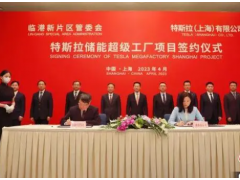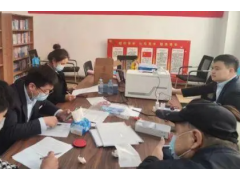The Regional Comprehensive Economic Partnership Agreement (RCEP) is by far the largest free trade area in terms of population, economy and trade in goods in the world. The ten ASEAN countries plus China, Japan, South Korea, Australia and New Zealand have jointly opened the East Asian A new era of regional economic cooperation. On January 1, 2022, RCEP will formally take effect in ratified countries when it reaches the threshold for entry into force. On June 2, 2023, RCEP will enter into force for the Philippines, the last country to ratify, and RCEP will take full effect for fifteen countries.
RCEP integrates 27 bilateral and multilateral trade arrangements and 44 investment agreements in the region, forming a comprehensive, modern, high-level and reciprocal free trade agreement. For the first time, China, Japan and South Korea are "in the same frame" in a free trade zone . The 15 RCEP countries have different national conditions, and there are huge differences in natural endowments, economic volumes, and development levels among countries. RCEP reflects the current general trend that countries are committed to promoting peaceful, cooperative, and win-win development. In the face of headwinds in globalization, it has injected strong positive energy into promoting the construction of an open world economy and accelerating the global post-pandemic recovery. RCEP has shown strong trade dividends, industrial dividends, institutional dividends, and development dividends. All parties should work together to play the integrated effect of multiple dividends.
Multiple dividends are gradually revealed
Give full play to the advantages of tariff reduction and trade liberalization and facilitation, give play to the fundamental role of trade dividends, and expand the big market in East Asia. The promotion effect of trade growth is the most realistic and obvious dividend of FTAs.
After RCEP comes into effect, more than 90% of the trade in goods among member states will be subject to zero tariffs. RCEP has brought about steady growth in intra-regional trade since it came into effect on January 1, 2022. In 2022, the trade volume between China and the other 14 RCEP member countries will be 12.95 trillion yuan, a year-on-year increase of 7.5%, accounting for 30.8% of China's total foreign trade in that year. Among them, in 2022, China's trade volume with ASEAN will be 6.52 trillion yuan, a year-on-year increase of 15%, accounting for 15.5% of my country's foreign trade, and ASEAN's position as my country's largest trading partner will be further consolidated. In the first quarter of 2023, China's imports and exports to the other 14 RCEP members will be 3.08 trillion yuan. Among them, the growth of import and export to Singapore, Laos and Myanmar reached 45.8%, 37.8% and 29% respectively. The trade of other RCEP member countries has generally shown a good development trend. Trade in Southeast Asian agricultural products, seafood, and Australian dairy products has grown rapidly, and the large market effect in East Asia continues to emerge.
Give full play to the comparative advantages of various countries and use the cumulative rules of origin to create a high-quality industrial chain in East Asia with global competitive advantages. The differences in the development levels of RCEP member countries objectively form the unique development potential of the region. Each country can participate in the regional production system according to its comparative advantages in terms of raw materials, technology, capital, labor, and processing and manufacturing capabilities.
At present, about 50% of the trade in the RCEP region is intermediate product trade, and the members have close ties in the industrial and supply chains. The RCEP cumulative rules of origin have promoted the rapid growth of intermediate goods trade, and the integrated development and integration effects of regional industrial chain value chains have become increasingly apparent. We have seen that many companies have already relied on the comparative advantages of different member states to implement cross-border layout and integration of production links, which will promote the continuous improvement of regional economic integration, further consolidate the existing production network in East Asia, and strengthen the entire regional industrial chain. Supply chain resilience is conducive to further enhancing the competitive advantages of East Asia in the three global regional production networks of North America, East Asia, and Western Europe.
Benchmark the high international standards such as the Comprehensive and Progressive Agreement for Trans-Pacific Partnership (CPTPP), continuously improve the degree of openness and liberalization, and create new institutional dividends.
The dividend of the RCEP system is first of all to promote the effective implementation of various facilitation and preferential policies under the existing rules. All parties should strengthen the implementation of policy docking, promote the integration of regional regulations, reduce institutional costs, and effectively improve the business environment. Under the rapid development of contemporary artificial intelligence, Internet of Things, big data, etc., it is necessary to strengthen the development of emerging fields such as e-commerce and data trade, and promote the development of data infrastructure, cross-border e-commerce, smart cities, big data, 5G, etc. In-depth cooperation in application and other fields, and give full play to the exemplary and leading role of existing cooperation results. RCEP's benchmarking of high-standard free trade agreements such as CPTPP and Digital Economy Partnership Agreement (DEPA) is the next step for all parties to make efforts. China proposes to accelerate institutional opening-up and promote the docking of rules and regulatory standards, which will create more development opportunities for member states.
Adhere to the gradual direction and the principle of inclusiveness, improve the development capabilities of less developed countries, and ensure the welfare improvement and overall interest balance that all parties should have.
RCEP better embodies the characteristics of the well-known "ASEAN way", that is, to establish a good mutual trust mechanism through full consultation, respect the equal status of all parties, fully consider the concerns and differences of all parties, and embody due inclusiveness through gradual changes. RCEP adheres to the principle of balancing interests. RCEP fully takes care of the interests of all parties and provides transitional arrangements for less developed members. At present, all RCEP member countries can achieve overall welfare improvement and growth, and RCEP is creating a vivid example of shared development opportunities among participating countries.
Promoting the effective release of dividends
The conclusion and full entry into force of RCEP has not come easily, and all parties should cherish it. Under the current background of the United States and other Western countries promoting "decoupling and breaking chains", RCEP focuses on promoting the realization of "strengthening chains", "extending chains" and "replenishing chains" in the region, which has become the biggest bright spot in promoting the recovery of the global economy, and its results will also benefit the world . Obtaining the multiple dividends of RCEP requires member states to strengthen communication, enhance mutual trust, and promote cooperation, especially to jointly resist interference that may be brought about by external forces through non-market forces.
RCEP's multiple dividends are not isolated but highly correlated. Trade dividends are the basis of other dividends, and industry dividends rely on trade dividends. Institutional dividends are a high-level expansion of trade dividends and industrial dividends, and institutional dividends in turn continuously increase trade dividends and industrial dividends. The release of RCEP dividends should pay attention to properly handling the relationship with other free trade agreements and bilateral and multilateral cooperation frameworks in the region, especially the China-ASEAN Free Trade Area Agreement and China and related countries based on the joint construction of the "Belt and Road".
First of all, it is necessary to do a good job of publicizing and guiding the existing rules of RCEP, so that various domestic market players in each member country can truly understand and use them well. RCEP involves market opening, rules of origin, trade facilitation, technical standards, and intellectual property rights. Among them, the rules of origin are highly specialized and require more training and guidance.
Second, we need to strengthen system building and negotiate the establishment of the RCEP Secretariat as soon as possible. Ensure that RCEP plays a pivotal role in various economic and trade agreements in the region, and solve various problems encountered in the implementation in a timely manner. Establish special working mechanisms such as RCEP-related industry alliances to accelerate the development and release of the cooperation potential brought about by multiple dividends.
Finally, it is necessary to promote the docking between RCEP and China-ASEAN Free Trade Area 3.0 to create a link effect. The 3.0 version of the China-ASEAN Free Trade Area under negotiation will be more open in the fields of digital economy, green economy, service trade and investment. The 3.0 version of the China-ASEAN Free Trade Area will help drive the further upgrading of RCEP.
It is worth mentioning that in the past 10 years, relevant ASEAN countries have actively participated in the joint construction of the "Belt and Road" and achieved fruitful results. For example, the opening of the China-Laos Railway has transformed Laos from a "land-locked country" into a "land-linked country", which has greatly improved Laos. Conditions for the development of foreign trade. The improvement of infrastructure and connectivity brought about by the current “Belt and Road” cooperation is narrowing the development gap between underdeveloped countries in Southeast Asia and other countries in the region, which will greatly enhance the ability of underdeveloped countries to benefit from participating in RCEP.




